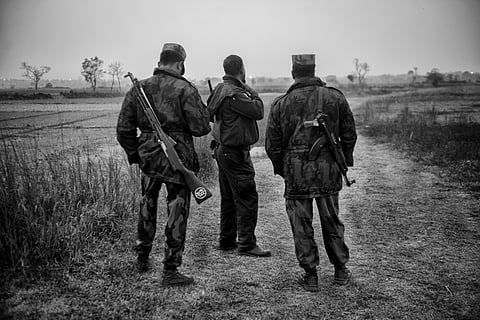(This photo essay is part of our special series 'Rethinking Bangladesh'. You can read the editorial note to the series here.)
Over the years, as I have documented the lives of communities living – and dying – in Bangladesh-India borderlands, it has become clear to me that the barbed-wire fences aren't just territorial boundaries, but also meeting points. This paradoxical nature of the border cannot be separated from the violence faced by those living alongside it, who are often treated as criminals by both states, and who have radically different experiences and conceptions of the border from many of us.
Growing up close to Bangladesh's border with India, I was aware that smuggling of goods floated the local economy. Yet why someone would risk their lives in such a deadly trade when smuggling was public knowledge, including to the local law enforcements on both sides of the border, was never clear to me. Naive of the inequities of regional geopolitics, I asked, why were the victims always from Bangladesh?

